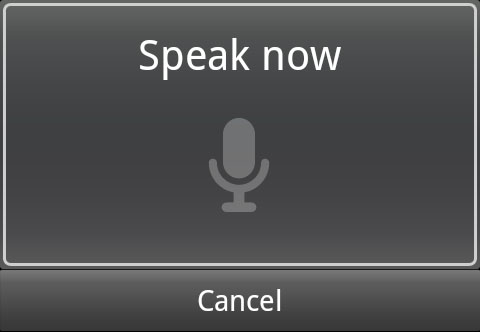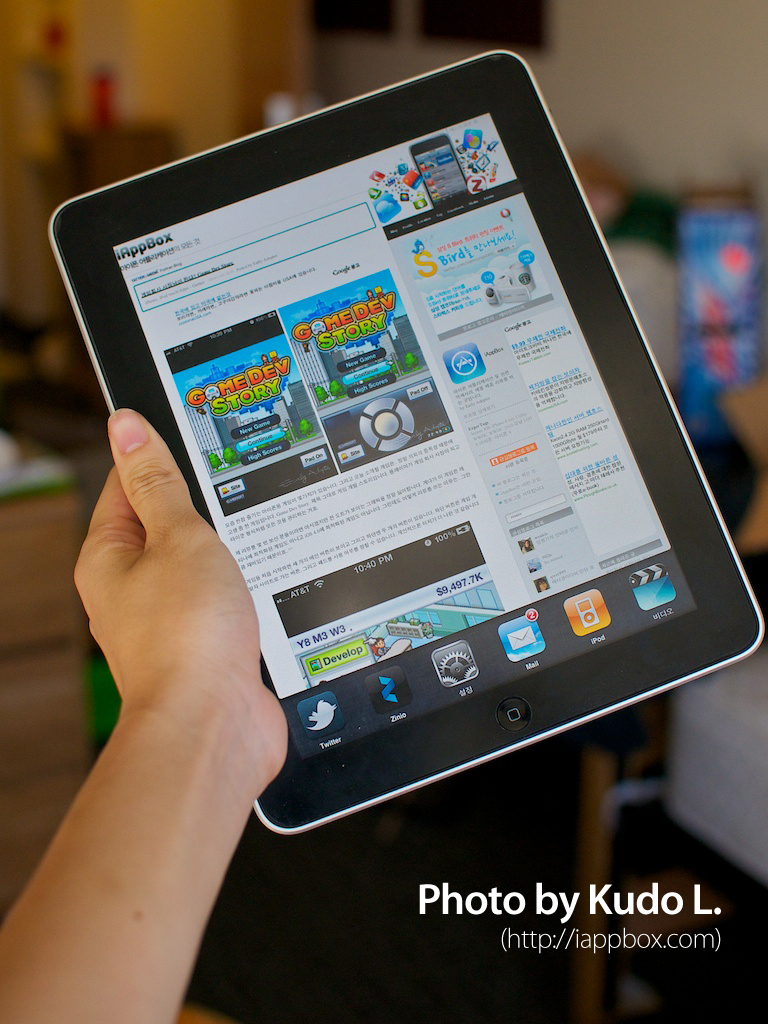
Last week, Google revealed Speech-to-Text Voice Input service for Korean. That’s second, right after English, which was announced with the release of Nexus One and Android 2.1 back in January. So, the basic premise of this is that you can speak into an Android phone and the phone dictates it into text. Theoretically, the algorithm can take up to 1,000 words, with quality degradation with more words spoken. Since it uses Google’s software in its server for the recognition, the phone has to be connected to data network, such as 3G or WiFi.
Let’s be honest, the voice recognition feature in a cellphone isn’t something new. Heck, even my 4-year-old Samsung dumbphone that I had before I bought a Galaxy S in Korea has that feature. The problem was, there weren’t many stuffs that you could do with it. For example, my old dumbphone could do this and that, but I actually used it only few times when I was bored and felt like voice-dialing someone. Even having an iPhone didn’t change much. The problem was still that you couldn’t do much with it. (Call someone or play something.)
However, Galaxy S changed a lot of things. It was mainly because of Voice Search embedded into Android 2.1. When I wanted to quickly search for something, I would just activate the search and say it. Amazingly, the quality itself was pretty good. This was actually first time that I found voice recognition useful.
Then came the Speech-to-Text. I tried on my friend’s HTC Incredible equipped with Froyo (The app that has the feature runs only on Froyo at this point) which, I gotta say, it was pretty impressive. It recognized Korean no problem, with some issues in English. Maybe it doesn’t like my (or my friends’) pronunciation.
As I said, the voice recognition technology uses Google’s server backend. Good thing about this, of course, is that customers don’t have to download the update for the keyboard app as the recognition gets better, since all Google has to do is just update the recognition software in the backend. But of course, you have to be connected to Internet constantly, though most are usually connected on 3G data network, except for those data freaks who ferociously monitors their usage, probably either because they don’t have much data packets per month to start with, or they just use a lot.
I’ll probably find using Speech-to-Text rather than Voice Search. Main reason is because while the language in the search function is tied by the system language (meaning, if you want to search things in English, you have to change the system language of the whole phone into English), all you have to do on Speech-to-Text keyboard is to change the language on the keyboard (you can also set it up to forcefully only recognize Korean). Since I’m an Korean student studying in U.S. soil, being able to search in both languages is important. With that said, I’ll probably even use Speech-to-Text for searching as well.
Last, but not least, all these voice recognition technology could be used in solving some accessibility issues. Recently, I had a chance to attend a tech talk from Google, one of which was centered around accessibility in Android. For now, the technology included basic navigation using D-pad and QWERTY keyboard (so the feature is pretty much useless without those two), but then I thought it would be a good idea to merge the voice recognition capabilities to the accessibility, and when asked, the Google rep also said that aforementioned process will ‘eventually’ happen. (It’s difficult at this point since accessibility team and voice recognition team are separate).
Anyhow, it feels like now that voice recognition technology is finally finding its use through the smartphone, and I’ve seen the future through Google’s technologies.
 간단히 말해서, 크롬용 트윗덱을 통해 크롬에 웹스토어를 통해 제공될 프로그램들의 미래를 살펴볼 수가 있었다. 물론 요즘 웹 프로그램으로 웬만한 프로그램이 대체가 가능한 것은 사실이다. (모바일에서는 아직 통신사 무선 데이터 등의 이유로 네이티브 앱이 선호되긴 하지만 말이다) 사실, 크롬 웹스토어를 통해 제공되는 앱들도 다 웹 프로그램들이다. 구글은 애플 등을 비롯해 웹 프로그램의 선두주자이고, (지메일이나 구글 독스만 봐도 알수 있다) 이러한 입지를 웹스토어를 통해 더욱 더 다지는 것이다.
간단히 말해서, 크롬용 트윗덱을 통해 크롬에 웹스토어를 통해 제공될 프로그램들의 미래를 살펴볼 수가 있었다. 물론 요즘 웹 프로그램으로 웬만한 프로그램이 대체가 가능한 것은 사실이다. (모바일에서는 아직 통신사 무선 데이터 등의 이유로 네이티브 앱이 선호되긴 하지만 말이다) 사실, 크롬 웹스토어를 통해 제공되는 앱들도 다 웹 프로그램들이다. 구글은 애플 등을 비롯해 웹 프로그램의 선두주자이고, (지메일이나 구글 독스만 봐도 알수 있다) 이러한 입지를 웹스토어를 통해 더욱 더 다지는 것이다. 크롬 OS는 내가 보기에는 현재 있는 옵션중엔 적절한 넷북용 운영체제다. 내가 옛날에 아이패드를 리뷰할 때도 강조했지만, 요즘 넷북의 가장 큰 문제는 데스크톱을 위해 만들어진 OS를 넷북같이 상당히 저사양인 컴퓨터에 쑤셔넣으려한다는 것이다. (넷북에 윈도 7을 넣으려는 게 가장 좋은 예라 하겠다.) 그러니 전체적으로 느린 성능은 어떻게 보면 당연한 거겠다. 내가 크롬 OS에 많은 기대를 걸고 있는 이유가 여기에 있다. 애초부터 넷북을 염두에 두고 개발했다보니, 훨씬 더 좋은 성능 안정화를 꾀할 수 있는 것이다. 물론 이것은 아직까지는 이론상의 얘기긴 하지만, 솔직히 기대를 걸어본다.
크롬 OS는 내가 보기에는 현재 있는 옵션중엔 적절한 넷북용 운영체제다. 내가 옛날에 아이패드를 리뷰할 때도 강조했지만, 요즘 넷북의 가장 큰 문제는 데스크톱을 위해 만들어진 OS를 넷북같이 상당히 저사양인 컴퓨터에 쑤셔넣으려한다는 것이다. (넷북에 윈도 7을 넣으려는 게 가장 좋은 예라 하겠다.) 그러니 전체적으로 느린 성능은 어떻게 보면 당연한 거겠다. 내가 크롬 OS에 많은 기대를 걸고 있는 이유가 여기에 있다. 애초부터 넷북을 염두에 두고 개발했다보니, 훨씬 더 좋은 성능 안정화를 꾀할 수 있는 것이다. 물론 이것은 아직까지는 이론상의 얘기긴 하지만, 솔직히 기대를 걸어본다.


